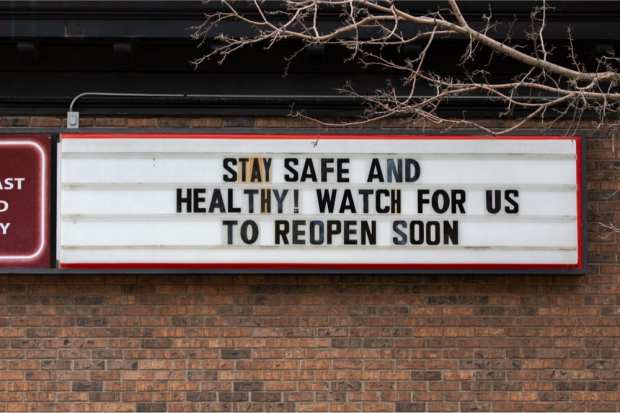Reinvention Key To Reopening The Economy

In good times we talk about the hockey stick shape, to symbolize up-and-to-the-right growth. In 2020 the metaphor being tossed about involves the letter “V.” The shape of it says everything about what optimism there is out there on how economies behave post-pandemic.
The “V” simile illustrates an economy plunging deep into the valley of commercial paralysis throughout Q1, followed by what some predict being a nearly identical bounce back to pre-coronavirus prosperity once the crisis is declared over, a vaccine is found, or perhaps both.
Whether the road to reopening graphs out like a hockey stick, the letter V, or something else remains to be seen. PYMNTS began asking the public what recovery looks like and what it requires in early March. In our latest feature, Why Reopening The US Economy Should Be About Reinventing It, CEO Karen Webster lays out the factors needed to ignite a recovery.
“Businesses must be convinced that demand will be sufficient enough to rehire their workforce and cover their costs before they run out of cash. The workforce must be convinced that it’s safe to return to work — from both a job security and public health standpoint,” Webster said.
“And the consumer — who today is eight times more afraid of dying from COVID than losing their jobs or their nest eggs as a result of it — must be rock-solid convinced,” Webster added, “that the rewards of resuming their physical activities are greater than (a) the frictions imposed when the economy partially reopens (b) their perceived individual health risks when reentering and (c) the rewards of continuing to do many of their day-to-day activities in a largely digital world that has worked pretty well for them so far.”
Polling our census-balanced national sample every 10 days, one pattern that continues to stand out is the shift to digital, be it grocery shopping, mobile order-ahead and order-to-eat for restaurant specialties, or general merchandise. Overall spend has fallen since the early weeks of panic buying but the digital trend is undeniable, with permanent effects already taking root.
“We will see forward-looking businesses seize the potential of hyper-personalizing the hyper-local experiences offered by businesses that largely operate in the physical world,” Webster said. “We will see platforms democratize logistics, artificial intelligence (AI) and payments choice so that those businesses can flex, as consumers shift from physical venues that require them to interact with lots of consumers they don’t know to the experiences they can now have at home with their family and friends — and to do so at scale.”
In coming months, much will depend on the ability of businesses and consumers to engrain new behaviors, particularly in how we experience shopping, dining and group entertainment.
As Webster notes, “Understanding the frictions consumers will require at reopening, and how willing they’ll be to tolerate them — and for how long — given how essential they deem the nature of the activity. And, more importantly, which frictions they won’t tolerate, because they’ve found suitable digital substitutes over the last seven weeks that work just fine.”
